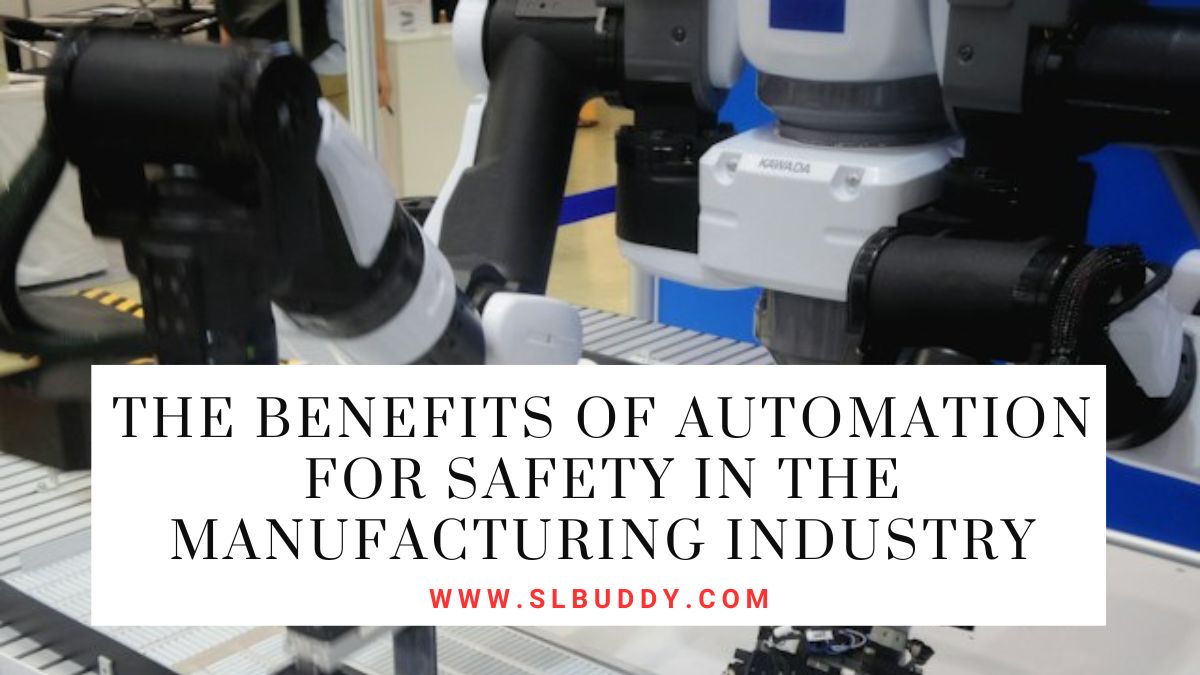
Manufacturing is critical to keeping our economy humming, but it carries inherent risks that must be managed carefully.
Fortunately, automation technologies provide manufacturers with more effective solutions for improving safety and efficiency in their operations.
By leveraging the power of cutting-edge tools such as robotics process automation (RPA) and industrial Internet of things (IIoT), manufacturers can create smarter processes that offer greater accuracy and precision while reducing the potential for human error or hazardous conditions on the production floor.
This blog post will investigate how manufacturing companies can use automated systems to increase safety.
1. Reducing the Risk of Injury to Employees
One of the most significant benefits of automation in manufacturing is reducing employee exposure to potentially hazardous situations.
Automated systems can often handle tasks that are dangerous for humans, such as handling heavy machinery, dealing with potentially toxic materials, or operating in extreme temperatures. Employers implementing Safety PLCs can effectively prevent employees from handling hazardous materials or lifting heavy objects.
This technology can ensure that these tasks are completed efficiently and without risking the safety of employees.
Additionally, automation can assist with safety in the workplace by implementing preventive measures that can detect and respond to potential hazards before they escalate.
For example, sensors can monitor environmental conditions and alert operators of any changes or malfunctions. This allows for swift action to be taken to prevent accidents and keep employees safe.
2. Increased Employee Efficiency
Imagine having more time to focus on creative and innovative projects instead of bogged down with repetitive and menial tasks.
Thanks to automated machines, this can become a reality for many employees. With the ability to perform these tasks quickly and accurately, human resources are freed up to take on new challenges and projects that can push a company forward.
Not only does this increase employee efficiency, but it also allows for a more dynamic and diverse workforce.

The implementation of automation can also improve productivity in the workplace. With automated processes, fewer errors and mistakes are made compared to manual labor.
This results in a more efficient production process, increasing output and profitability for manufacturing companies.
3. Enhanced Quality Control
Automation in manufacturing plays a pivotal role in enhancing quality control. It enables consistent and precise production, minimizing variations and errors that might occur with manual operations.
Automated systems can meticulously follow pre-programmed instructions, ensuring that each product is manufactured to the company’s exact specifications.
This increased precision contributes to higher quality products and less waste due to defects, which improves the company’s overall efficiency and profitability.
Moreover, automated systems are equipped with advanced sensors and diagnostic capabilities that continuously monitor production in real-time.
This includes checking for quality issues, such as defects or inconsistencies, more accurately and timely than human inspection.
The system can automatically adjust or flag the item for further inspection when a potential issue is detected.
This proactivity helps maintain high production standards and reduces the chance of faulty products reaching customers, safeguarding a company’s reputation for quality.
4. Reduced Errors in Production
Automated systems have a significant role in minimizing errors in the production process.
These systems are designed to follow precise instructions, reducing the likelihood of mistakes commonly associated with manual operations.
By ensuring every task is executed precisely, automation minimizes the risk of errors, leading to improved production accuracy, fewer product recalls, and less waste due to defective products.
Furthermore, with automation, the consistency of production processes is maintained, even across multiple shifts.
Unlike human workers, machines do not experience fatigue or distractions and can thus maintain the same level of efficiency and precision around the clock.
This round-the-clock precision drastically reduces errors and ensures a uniform production output that meets the set quality standards.
This consistency and reliability in production can significantly enhance a manufacturing company’s reputation for product reliability and quality.
5. Increased Productivity and Cost Savings
With increased efficiency and reduced errors, it’s no surprise that automation can also lead to significant cost savings for manufacturers.
By streamlining processes and reducing the need for human labor, companies can save on operational costs such as wages, training, and benefits.
Additionally, manufacturers can reduce their material costs by utilizing automated systems to increase output and minimize waste.
Automation also has the potential to enhance workplace productivity. Integrating automated systems with human workers allows tasks to be executed more swiftly and with enhanced precision.
As a result, production rates can increase, and lead times can be reduced, enabling companies to meet higher demand without additional labor.
6. Improved Flexibility and Adaptability
In today’s fast-paced manufacturing world, flexibility and adaptability are crucial. With automation, companies can easily adapt to changes in demand or production processes without extensive retraining or adjustment periods for workers.
Automated systems can be programmed to handle various tasks, allowing manufacturers to quickly shift their focus to different products or processes as needed.
With the integration of IoT technology, manufacturers can also access real-time data and analytics to make informed decisions about their operations.
This level of data insight allows companies to identify areas for improvement, optimize processes, and make adjustments in real-time to ensure maximum efficiency.
For instance, if a machine shows wear and tear, an automated system can alert operators to schedule maintenance before it breaks down, avoiding costly downtime.
7. Reduced Environmental Impact
Automation in manufacturing can significantly contribute to reducing a company’s environmental footprint.
Automated systems optimize resource usage and minimize waste generation, leading to more sustainable operations.
For example, advanced technologies such as AI-driven predictive analytics can forecast demand more accurately, enabling manufacturers to produce only what is needed and reducing overproduction and waste.
Precision machinery can ensure optimal use of materials, minimizing offcuts and other waste during production.
Moreover, by improving energy efficiency, automated processes can lower emissions and the overall carbon footprint of the manufacturing process.
Automation can also reduce the need for physical transportation, limiting the associated environmental impact.
Hence, automation improves profitability and aligns manufacturing processes with sustainable practices, fostering a greener future.
Don’t miss: What Companies Are in the Energy Field?
The bottom line
Automation has become indispensable for safety in the manufacturing industry. It reduces risks to employees, boosts productivity, saves costs, enhances quality control, minimizes errors, and increases workplace flexibility.
These wide-ranging benefits empower manufacturing companies to improve safety and efficiency.
By harnessing advanced automation technologies, manufacturers can create smarter, safer processes that protect their employees and drive profitability in a highly competitive industry.
If you still need to embrace automation in your manufacturing operations, now is the perfect time.












